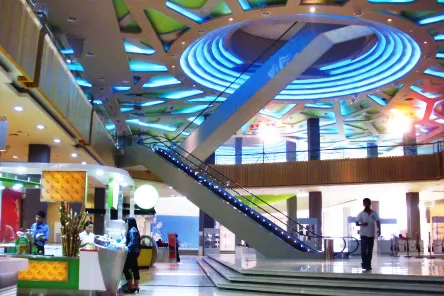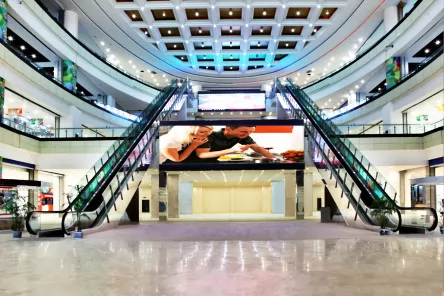Escalator design
Many factors affect the design of escalators, including physical requirements, location, traffic patterns, safety considerations and aesthetic preferences.


First, physical factors must be considered, such as the vertical and horizontal distances to be crossed. These factors will determine the height and actual length of the escalator. The ability of building infrastructure to support heavy components is also a key physical issue. The location is very important because escalators should be located in places that are easily visible to the general public. In department stores, customers should be able to easily see goods. In addition, the upper and lower traffic of escalators should be separated and should not enter the confined space.
Traffic patterns must also be considered in the design of escalators. In some buildings, the goal is only to move people from one floor to another, but in other buildings there may be more specific requirements, such as directing tourists to major exits or exhibitions. The number of passengers is very important because the escalator is designed to accommodate a certain number of passengers. For example, a single-width escalator traveling at a speed of 1.5 feet ( 0.45 meters ) per second is estimated to move 170 people every five minutes. The wider model travels at a speed of 2 feet ( 0.6 meters ) per second and can accommodate up to 450 people at the same time. The carrying capacity of the escalator must meet the expected peak traffic demand. This is very important for applications where the number of passengers has suddenly increased. For example, escalators used in railway stations must be designed to cope with the peak flow of trains without causing excessive congestion at the entrances of escalators.
Of course, safety is also a major consideration in the design of escalators. Fire protection for escalator floor openings can be provided by installing automatic sprinkler heads or fire shutters, or installing escalators in closed fire protection halls. In order to limit the danger of overheating, adequate ventilation must be provided for spaces equipped with motors and gears. If escalators are the main means of transportation between floors, it is advisable to use traditional stairs adjacent to escalators. It may also be necessary to provide wheelchairs and disabled people with elevators adjacent to escalators. Finally, the aesthetic problems of escalators should be considered. Architects and designers can choose from a wide range of styles and colors of handrails and colored side panels.
Manufacturing process of Escalator
The first stage of escalator construction is design. Escalator manufacturers use this information to construct properly customized equipment.
There are two types of companies that provide escalators, escalator manufacturer ( such as Ningbo hosting elevator ) who actually manufacture equipment, and equipment designed and installed by secondary suppliers.

In most cases, the secondary supplier obtains the necessary equipment from the primary manufacturer and makes necessary modifications to the installation. Therefore, most escalators are actually assembled in the escalator manufacturing factory. Rails, ladder chains, stair assemblies, motorized gears, and pulleys are all fixed to the truss before shipment.
The landing area must be ready to connect to the escalator before installation. For example, concrete fittings must be poured and steel frames that will support trusses must be connected. After the escalator was delivered, the entire assembly was disassembled and moved to a position between the top and bottom landing holes. There are many ways to lift the truss assembly to the proper position, one of which is a scissor-type lifting device installed on a wheeled support platform. Scissor lifts are equipped with positioner assemblies to assist in vertical and angular alignment of escalators. With such a device, the upper ends of the trusses can be easily aligned and then supported by supporting walls associated with landing. The lower end of the truss may then be lowered into a pit associated with the floor of the lower platform. In some cases, railings may be transported separately from other equipment. In this case, they are carefully coiled and packed for shipment. Then, after installing the escalator s, connect them to the appropriate chain.
Finally connect and check the power supply to ensure that all tracks and chains are correctly aligned.
Check whether all motor components are working properly and whether belts and chains are normal.
Escalator is a continuously moving staircase. There are a pair of wheels on both sides of each staircase, one in front of the staircase and one behind it. The wheels run on two tracks. At the top and bottom of the escalator, the inner rail inclines downward, flattening the bottom of the stairs, making it easier for riders to get on and off the vehicle.
Steady movement, correct speed, emergency braking system started. The pedals must be far enough not to pinch or rub each other. However, there should be no big gap in their position, which may increase the chance of injury.



